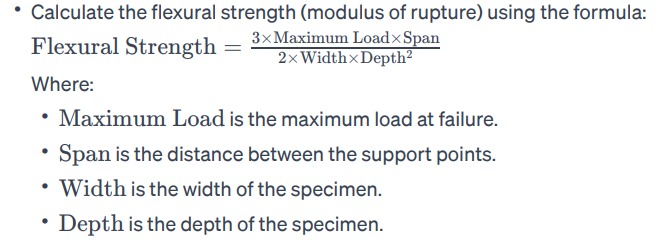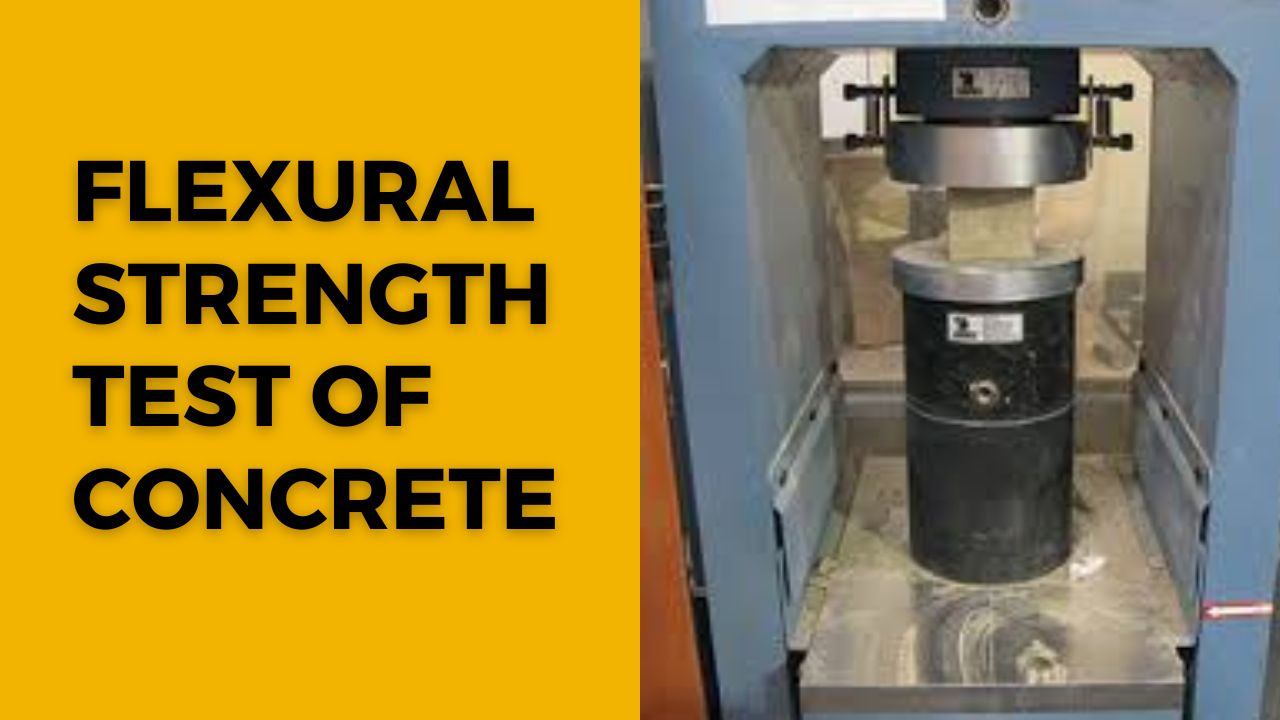The flexural strength test of concrete is also known as the modulus of rupture test. It is conducted to determine the ability of a concrete specimen to resist failure in bending. The test provides valuable information about the quality of the concrete, especially in terms of its ability to withstand applied loads and distribute them across its length.
Here’s a step-by-step guide on how the flexural strength test is typically conducted:
Equipment and Materials flexural strength test :
- Testing Machine (Flexural Testing Machine): This machine consists of two loading points and a central point where the bending force is applied.
- Concrete Specimens: Typically, prismatic or cylindrical specimens are used. These specimens are usually cast in molds and cured properly before testing.
- Measuring Instruments: A measuring device, such as a displacement transducer or dial gauge, to measure the vertical deflection of the specimen.
- Weighing Scale: To measure the weight of the specimen accurately.
Test Procedure:
Specimen Preparation:
- Concrete specimens are usually molded in the form of a beam or a rectangular prism. Standard dimensions are specified by relevant testing standards (e.g., ASTM C78 or EN 12390-5).
- Ensure proper curing of the specimens. Standard curing conditions involve immersing the specimens in water until the testing day.
Testing Machine Setup:
- Set up the flexural testing machine according to the manufacturer’s instructions.
- Ensure the machine is calibrated, and the loading points are aligned correctly with the specimen.
Loading the Specimen:
- Place the specimen on the testing machine with supports underneath.
- Apply the load at the center of the specimen until failure occurs. The rate of loading is typically specified in the testing standard.
Recording Measurements:
- Measure the vertical deflection at the center of the specimen as the load is applied. This helps to plot the load-deflection curve.
- Record the maximum load at failure.
Calculations:

Reporting Results:
- Report the flexural strength in units of pressure (e.g., MPa or psi).
It’s important to note that the flexural strength of concrete is influenced by factors such as mix design, curing conditions, and the quality of materials used. Testing standards, such as ASTM C78 for the United States or EN 12390-5 for Europe, provide detailed procedures and specifications for conducting the flexural strength test. Always follow the relevant standards and guidelines when performing the test.

